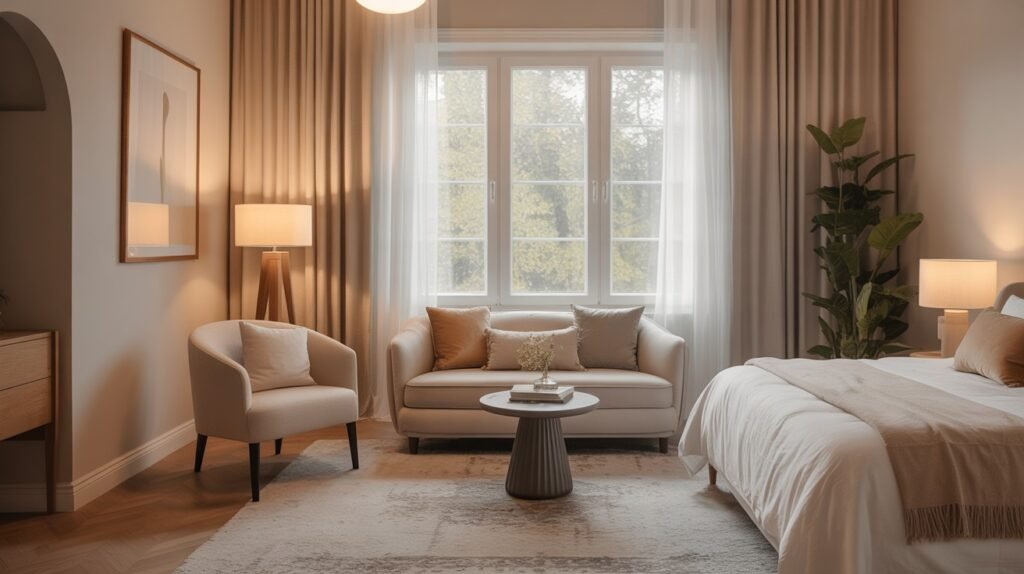Creating a comfortable bedroom sitting area can completely change how you use and feel about your personal space.
Many people think bedrooms are just for sleeping, but adding a dedicated spot for relaxation opens up so many possibilities.
A well-designed sitting space gives you a quiet retreat within your room.
You can curl up with a book, enjoy your morning coffee, catch up on emails, or simply have a moment to yourself away from the main living areas.
Planning is key to making this work. You’ll want to consider your room’s size, choose furniture that fits the scale, and think about lighting that creates the right mood.
Practical benefits include better use of empty corners, increased functionality, and enhanced visual appeal.
Even small bedrooms can accommodate a thoughtful seating arrangement that adds both comfort and style to your space.
Benefits of a Bedroom Sitting Area
- Personal Retreat: A dedicated sitting space provides a quiet sanctuary within your room where you can escape daily stress. This private corner becomes your go-to spot for meditation, reflection, or simply enjoying some peaceful alone time.
- Multi-Functionality: Your sitting area serves multiple purposes throughout the day, from morning coffee rituals to evening reading sessions. It can function as a workspace for emails, a relaxation zone for stretching, or a comfortable spot for phone calls.
- Enhanced Visual Appeal: A thoughtfully arranged sitting area adds layers and depth to your bedroom’s overall design scheme. The additional furniture pieces and accessories create visual interest while making the room feel more complete and professionally styled.
- Improved Space Management: Empty corners and awkward spaces get transformed into functional areas that serve a real purpose. Large bedrooms benefit from better proportions, while smaller rooms gain valuable extra seating without feeling cramped.
- Increased Property Value: A well-designed bedroom sitting area demonstrates thoughtful space planning and luxury living to potential buyers. This feature suggests the room can serve multiple functions, making it more appealing and potentially boosting your home’s market appeal.
11 Ideas for a Functional Bedroom Sitting Area
1. Cozy Corner with an Armchair and Floor Lamp

Upgrade an unused corner into a reading haven with a comfortable armchair and adjustable floor lamp. Choose a chair with good back support and arms wide enough for a book or tea teacup. Add a small side table for essentials and a soft throw blanket.
This setup creates the perfect spot for evening reading or quiet morning moments before starting your day.
2. Window Bench with Storage
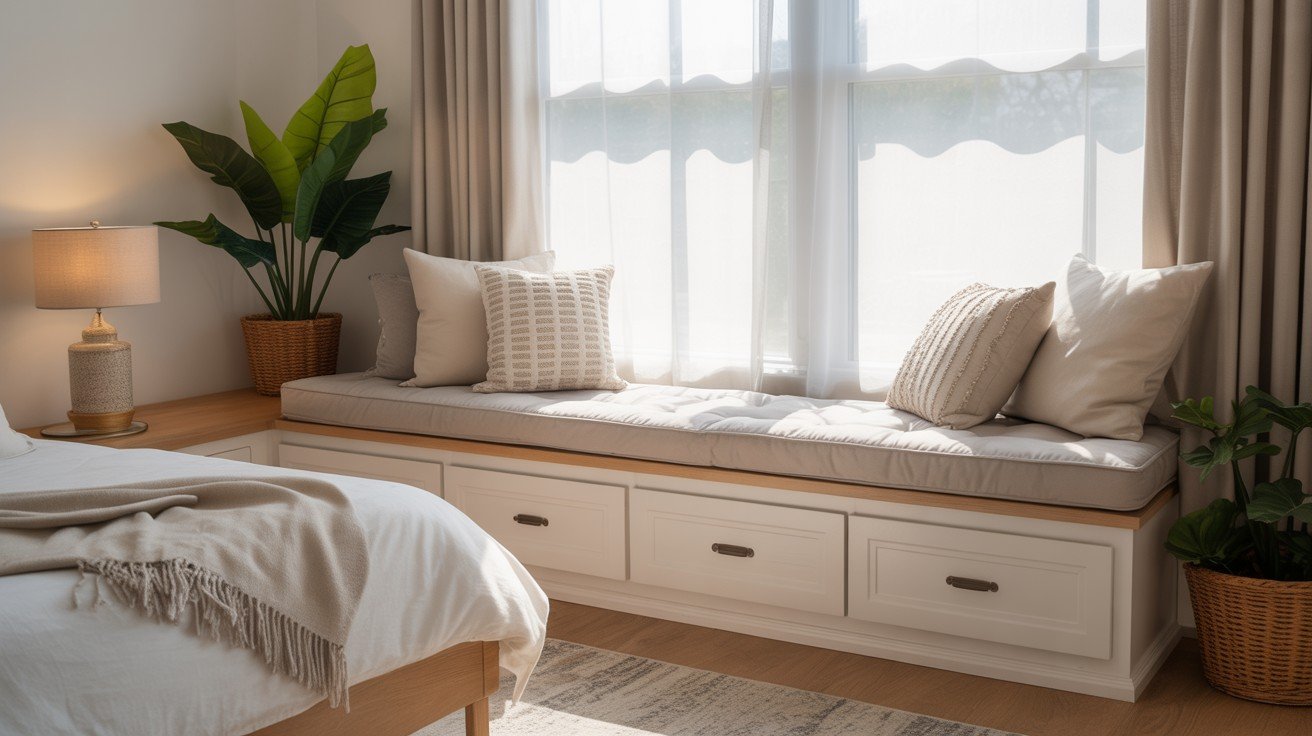
Install a custom bench beneath your bedroom window to maximize natural light while adding valuable storage space. Use the hidden compartment for seasonal bedding, books, or personal items.
Top with comfortable cushions and decorative pillows that complement your room’s color scheme. This arrangement provides seating while keeping clutter organized and taking advantage of the room’s brightest spot.
3. Small Sofa or Loveseat at the Foot of the Bed

Position a compact sofa or loveseat at the foot of your bed to create an intimate lounge area. This placement works well in larger bedrooms and provides comfortable seating for two people.
Choose a piece with clean lines that won’t overwhelm the space. Add coordinating throw pillows and a small area rug to define the seating zone and tie it into your overall bedroom design.
4. Statement Accent Chair with a Side Table
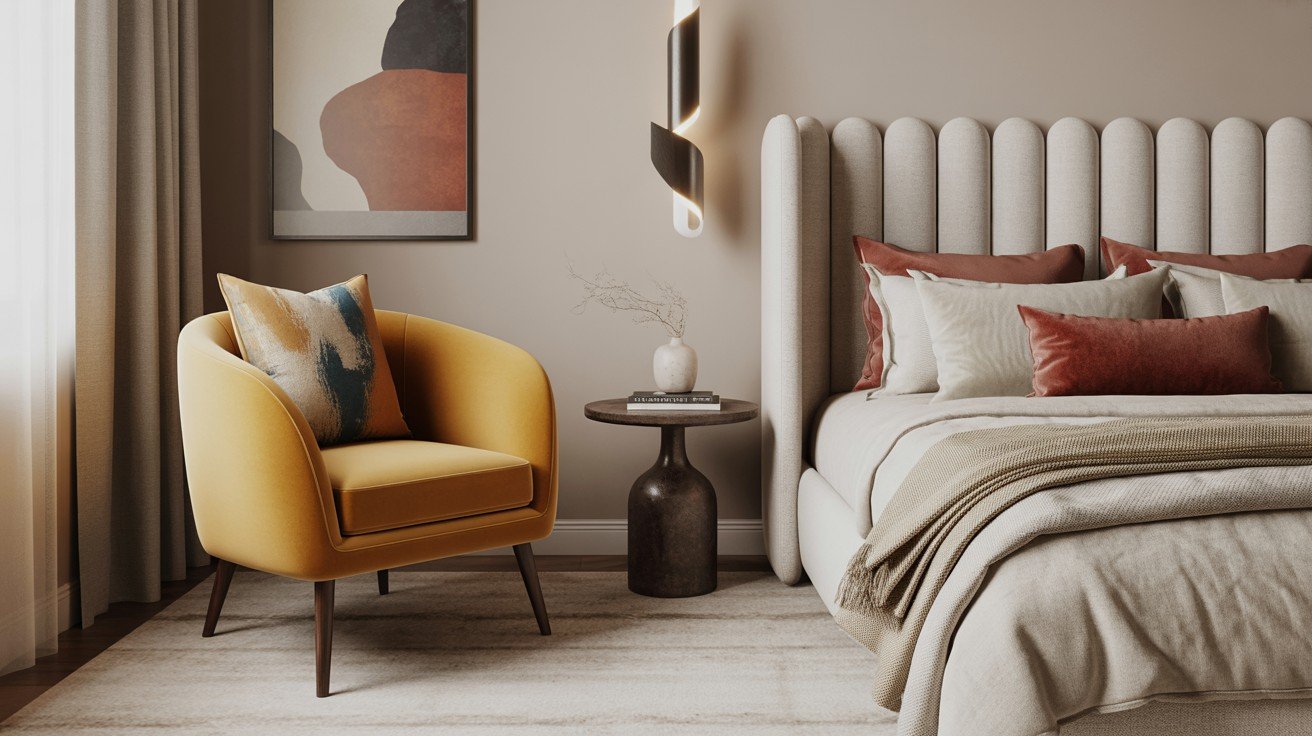
Make a bold design statement with a uniquely shaped or brightly colored accent chair paired with a functional side table.
This combination serves as both seating and visual interest, drawing the eye while providing practical space for drinks, books, or decorative objects.
Choose contrasting textures like a velvet chair with a wooden table to add depth and personality to your bedroom’s aesthetic.
5. Chaise Lounge for Luxurious Relaxation

A chaise lounge brings hotel-like luxury to your bedroom while providing the perfect spot for afternoon naps or extended reading sessions. Position it near a window or in a corner where you can stretch out comfortably.
Choose upholstery that complements your bedding and add a cashmere throw for extra comfort. This piece works especially well in master bedrooms with generous square footage.
6. Desk and Chair Combo for a Mini Home Office
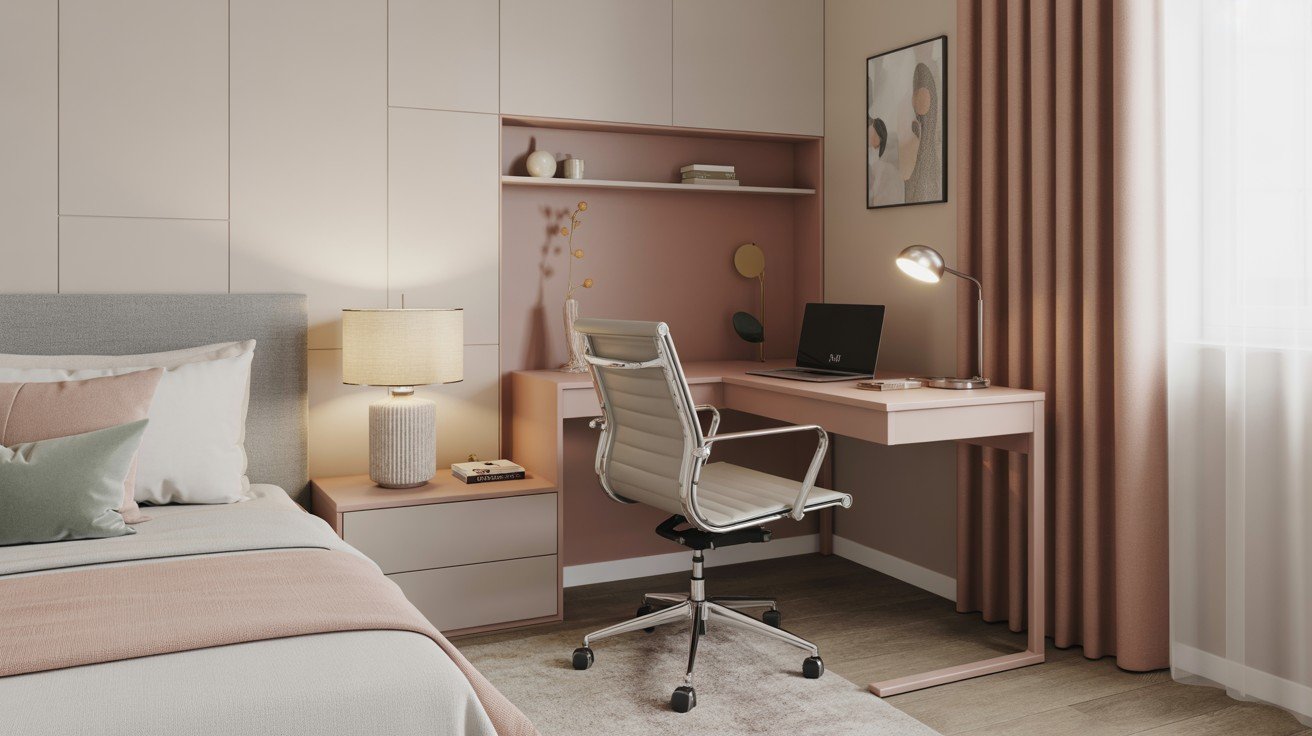
Create a productive workspace within your bedroom using a compact desk and ergonomic chair. This setup is perfect for remote work, paying bills, or personal projects like journaling or crafting.
Choose a desk with drawers for organization and ensure adequate lighting with a table lamp. Keep the area tidy with stylish storage solutions that blend seamlessly with your bedroom’s overall design scheme.
7. Built-In Nook or Alcove Seating
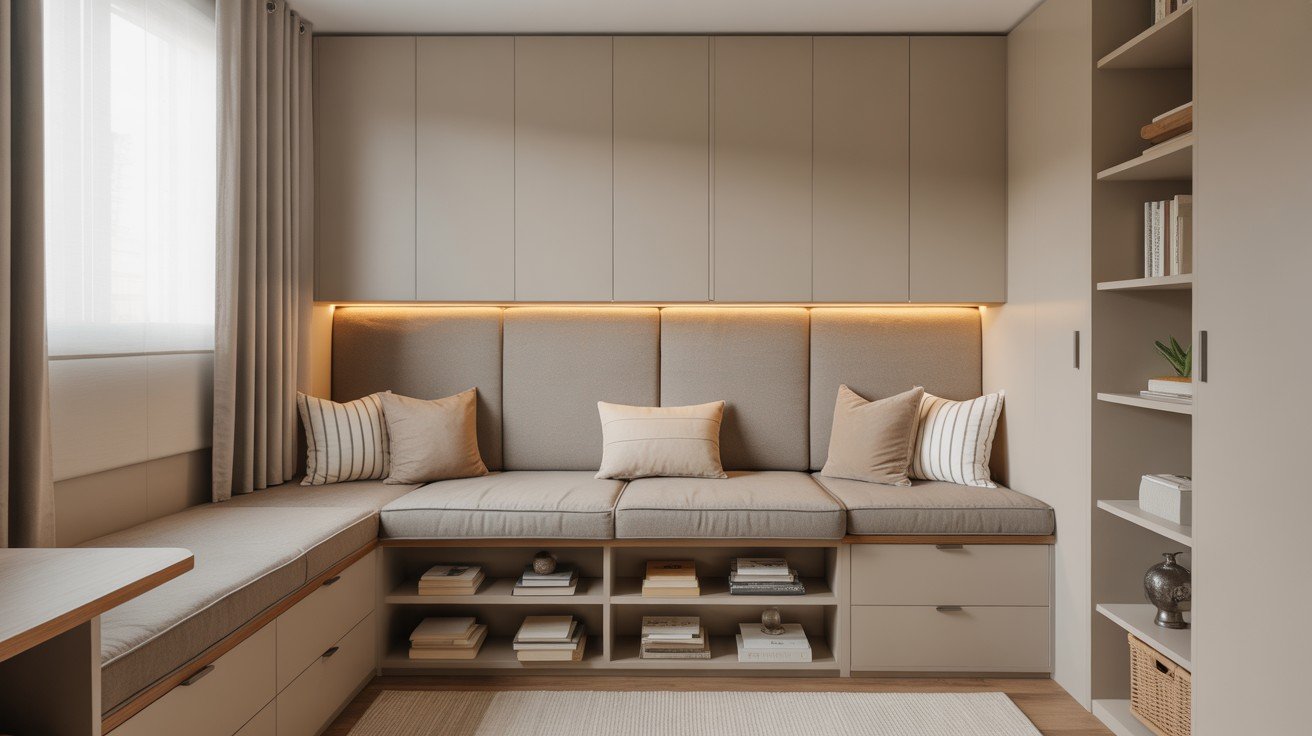
Take advantage of architectural features like alcoves or bay windows by adding custom-built-in seating.
This approach maximizes space efficiency while creating a seamless look that appears intentionally designed.
Add comfortable cushions and back pillows for support. Built-ins work particularly well in older homes with unique architectural details, turning potentially awkward spaces into functional and attractive seating areas.
8. Pair of Slipper Chairs with a Coffee Table
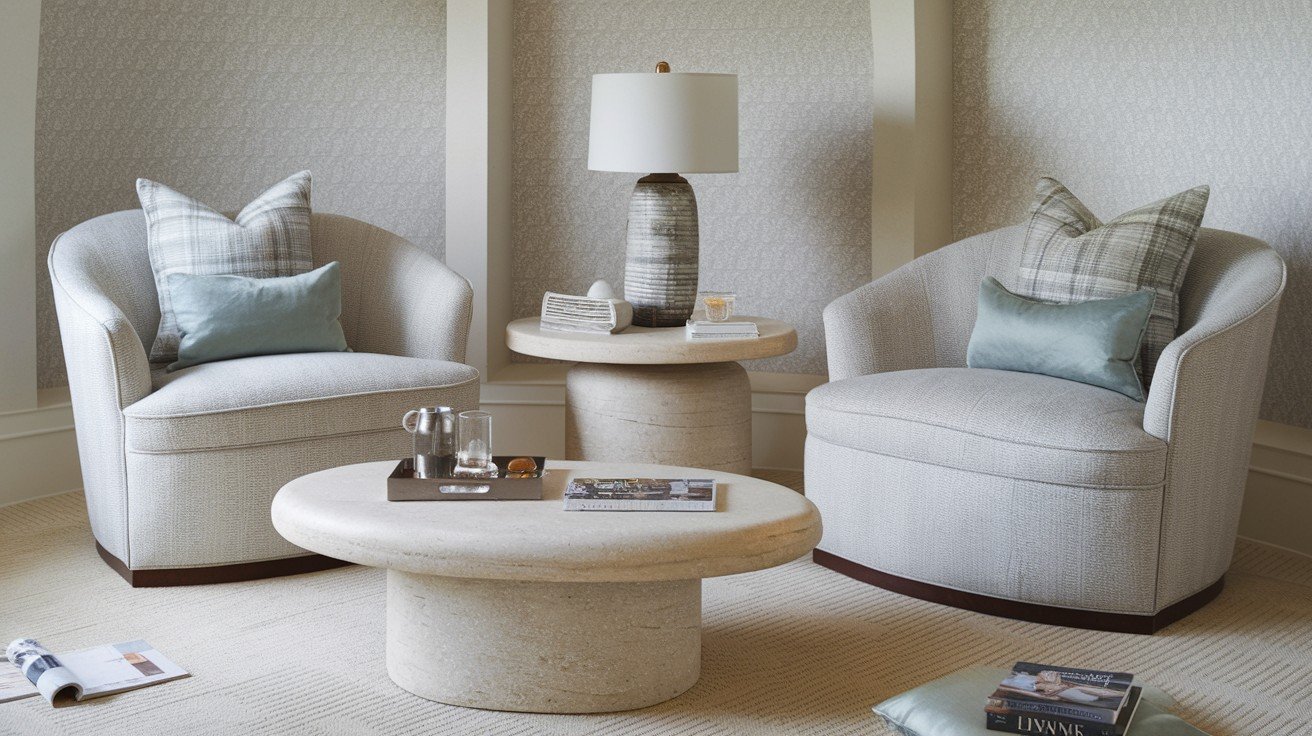
Create a conversation area using two matching slipper chairs positioned around a small coffee table.
This arrangement is perfect for couples who want to enjoy morning coffee together or friends visiting in your private space.
Choose chairs without arms to save space and add a circular or oval table to encourage interaction. This setup works well in master bedrooms with adequate floor space.
9. Hammock Chair or Hanging Swing
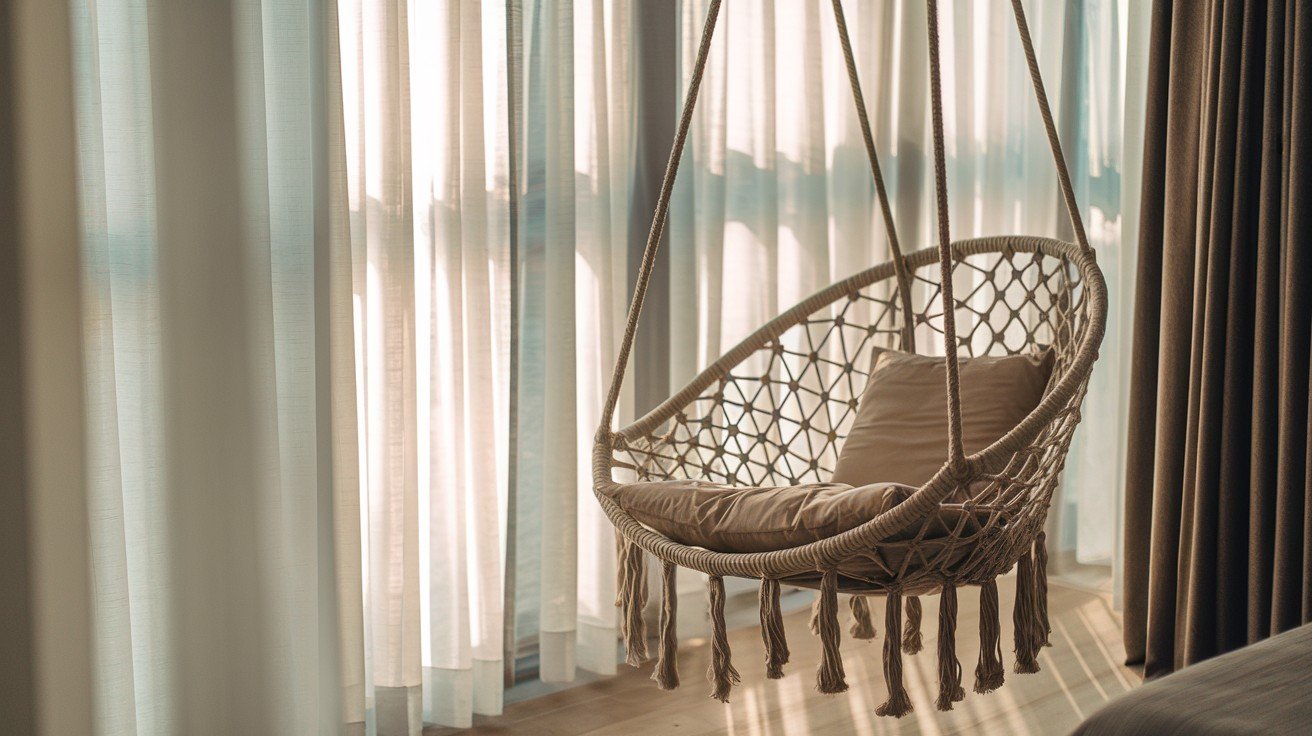
Add a playful element to your bedroom with a hanging chair or indoor swing that saves valuable floor space. These pieces work well in rooms with high ceilings and strong structural support.
Choose natural materials like rattan or rope for a bohemian feel, or sleek metal for modern aesthetics.
Add soft cushions for comfort and position near a window for natural light while reading or relaxing.
10. Oversized Floor Cushions or Poufs
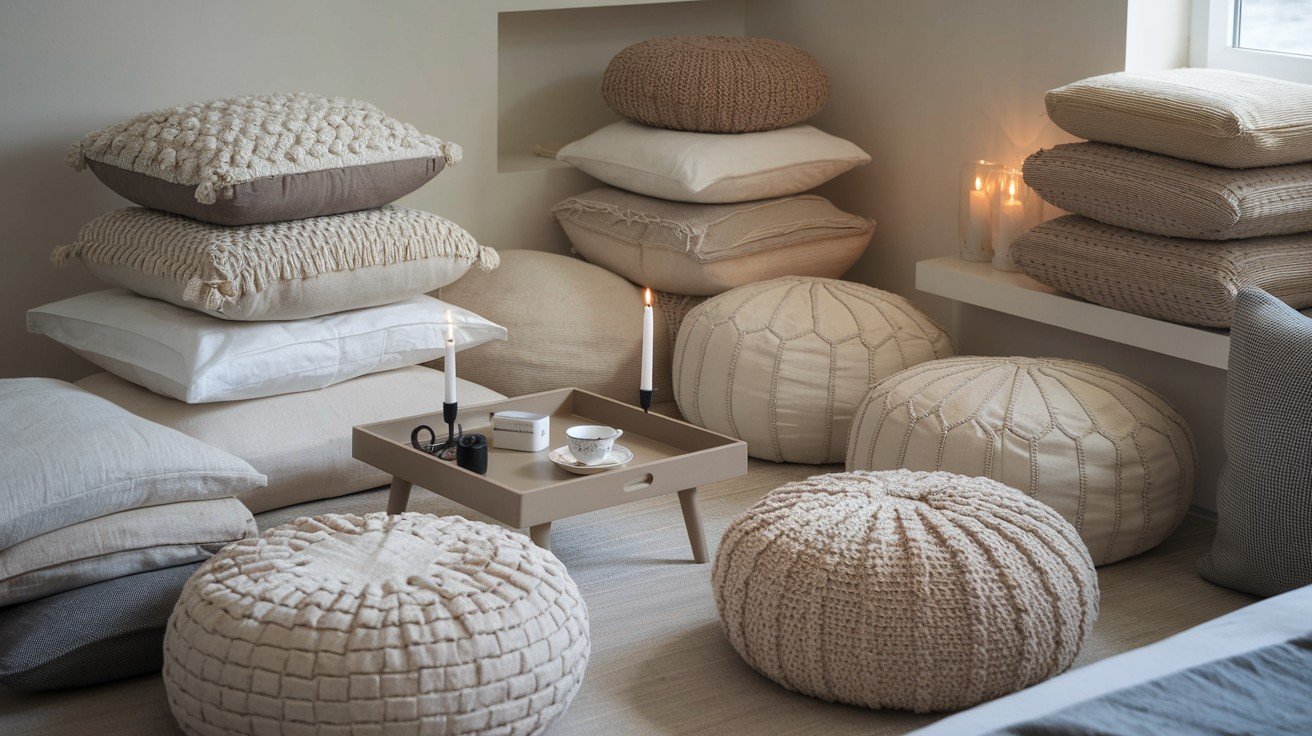
Floor cushions and poufs offer flexible seating options that can be easily moved or stored when not needed.
This approach works particularly well in smaller bedrooms where permanent furniture might feel overwhelming.
Choose washable covers in colors that complement your bedding and add a low coffee table or tray for functionality. Stack multiple cushions for varied seating heights and enhanced comfort during use.
11. Fireplace-Facing Arrangement

If your bedroom features a fireplace, arrange seating to take advantage of this natural focal point. Position chairs or a small sofa to face the fireplace, creating a cozy atmosphere perfect for cold evenings.
Add a soft area rug to define the space and include side tables for drinks or books. This arrangement works best in larger master bedrooms where the fireplace can serve as both a functional heating element and an attractive design element.
Planning Your Sitting Area
- Assessing Space: Start by measuring your available floor space and identifying which areas work best for seating arrangements. Small bedrooms benefit from corner placements or window areas, while larger rooms can accommodate more central positioning or multiple seating options.
- Choosing the Right Furniture: Select pieces that match your room’s proportions – oversized furniture overwhelms small spaces, while tiny pieces get lost in large rooms. Look for items that serve double duty, like storage ottomans, benches with hidden compartments, or side tables with drawers.
- Lighting Considerations: Take advantage of natural light by positioning seating near windows for daytime activities like reading or working. Add table lamps, floor lamps, or wall sconces to create warm, inviting lighting for evening relaxation and to avoid harsh overhead lighting.
- Defining the Area: Use area rugs to visually separate your sitting space from the sleeping area and create a cohesive look. Consider room dividers, bookcases, or strategic furniture placement to establish clear boundaries without blocking natural light flow.
- Traffic Flow Management: Ensure your sitting area doesn’t obstruct pathways between the bed, closet, and bathroom for smooth daily movement. Position furniture so it feels intentional rather than blocking access to other essential areas of the room.
Styling Tips for Bedroom Sitting Areas
- Layer Soft Textiles: Add warmth and comfort with throw pillows in varying textures, cozy blankets draped over chairs, and area rugs that define your seating space. Mix different fabrics like linen, wool, and cotton to create visual interest while maintaining a cohesive color palette that complements your existing bedding and window treatments.
- Bring in Natural Elements: Introduce life to your sitting area with small potted plants, hanging planters, or a single floor plant that thrives in your room’s lighting conditions. Plants not only purify the air but also add a fresh, calming presence that makes your space feel more inviting and connected to nature.
- Add Meaningful Personal Items: Display books you love, artwork that inspires you, scented candles for ambiance, or framed photos of special memories. These personal touches make your sitting area feel uniquely yours and create conversation starters while reflecting your personality and interests in this intimate space.
Conclusion
Creating a functional bedroom sitting area transforms your personal space into a multi-purpose retreat that serves your daily needs while adding visual interest to the room.
From simple corner arrangements with a single chair to more elaborate setups with multiple seating options, there’s a solution for every bedroom size and style preference.
The key to success lies in thoughtful planning, considering your available space, choosing appropriately sized furniture, and ensuring good lighting for various activities.
These seating areas provide countless benefits, from quiet reading spots to productive workspaces, all while making better use of your bedroom’s square footage.
With the right combination of furniture, textiles, and personal touches, your bedroom sitting area becomes more than just extra seating; it becomes a cherished space where you can relax, work, and enjoy moments of solitude in comfort and style.
Frequently Asked Questions
What’s the minimum space needed for a bedroom sitting area?
You need at least 3×3 feet for a single chair setup, though 4×6 feet works better for comfortable movement.
How do I choose furniture that won’t make my bedroom feel cramped?
Select pieces proportional to your room size and choose light colors or transparent materials to maintain visual openness.
Can I create a sitting area in a small bedroom?
Yes, use corner spaces, window areas, or multi-functional furniture like storage benches to maximize limited square footage effectively.

